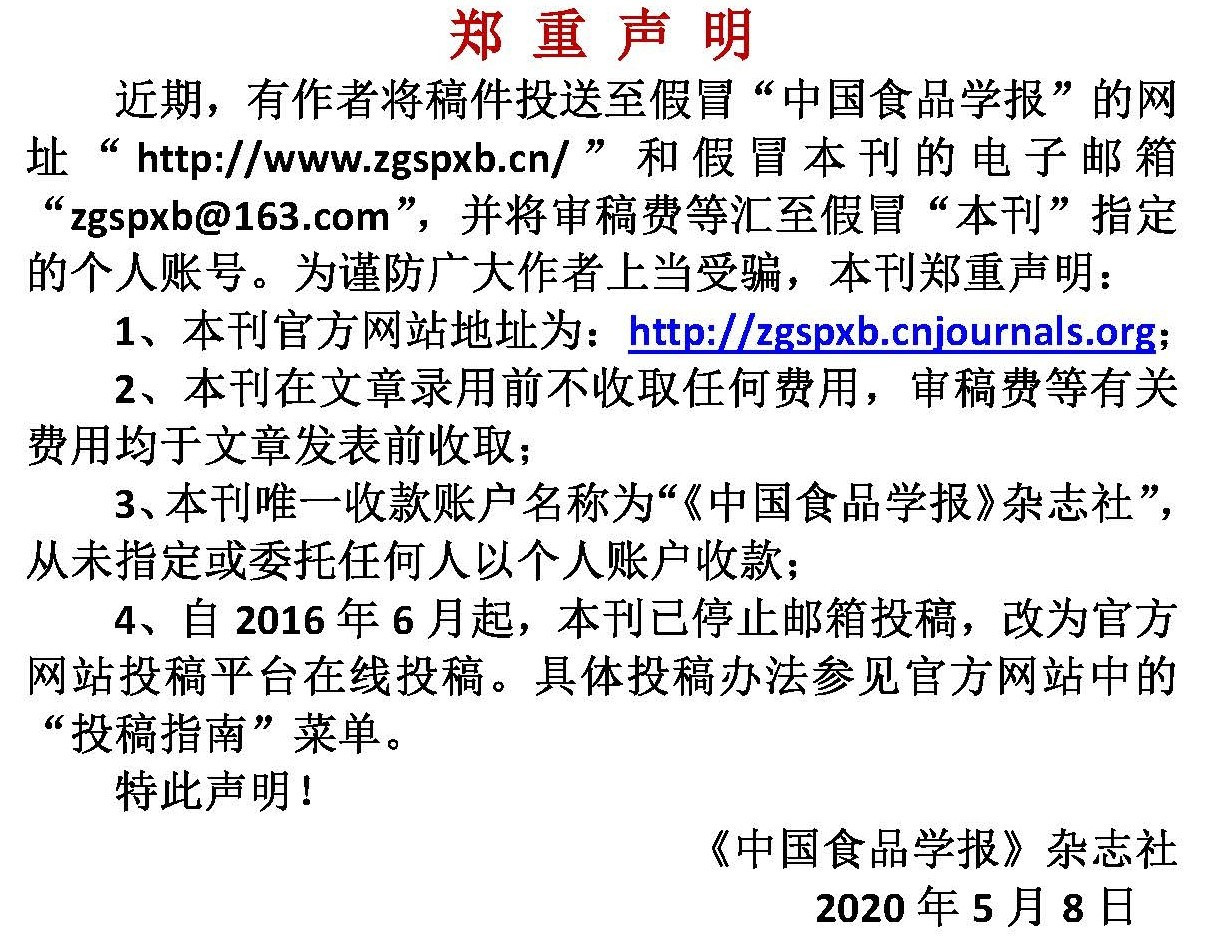热处理对莲藕中酚类物质消化释放与抗氧化活性的影响
作者:
作者单位:
(1.武汉轻工大学食品科学与工程学院 农产品加工与转化湖北省重点实验室 武汉 430023;2.武汉轻工大学生命科学与技术学院 武汉 430023)
作者简介:
通讯作者:
中图分类号:
基金项目:
湖北省重点研发计划项目(2022BBA0023);武汉市知识创新专项基础研究项目(20220208 01010389)
Effects of Heat Treatment on the Digestive Release and Antioxidant Activity of Phenolic Compounds in Lotus Root
Author:
Affiliation:
(1.School of Food Science and Engineering, Hubei Key Laboratory for Processing and Transformation of Agricultural Products, Wuhan Polytechnic University, Wuhan 430023;2.School of Life Science and Technology, Wuhan Polytechnic University, Wuhan 430023)
Fund Project:
引用本文
吴昊怡,吴瑾瑾,易阳,孙莹,王宏勋,彭凯迪.热处理对莲藕中酚类物质消化释放与抗氧化活性的影响[J].中国食品学报,2024,24(1):72-82
复制分享
文章指标
- 点击次数:
- 下载次数:
- HTML阅读次数:
历史
- 收稿日期:2023-01-23
- 最后修改日期:
- 录用日期:
- 在线发布日期: 2024-02-19
- 出版日期:
版权所有 :《中国食品学报》杂志社 京ICP备09084417号-4
地址 :北京市海淀区阜成路北三街8号9层 邮政编码 :100048
电话 :010-65223596 65265375 电子邮箱 :chinaspxb@vip.163.com
技术支持:北京勤云科技发展有限公司
地址 :北京市海淀区阜成路北三街8号9层 邮政编码 :100048
电话 :010-65223596 65265375 电子邮箱 :chinaspxb@vip.163.com
技术支持:北京勤云科技发展有限公司
